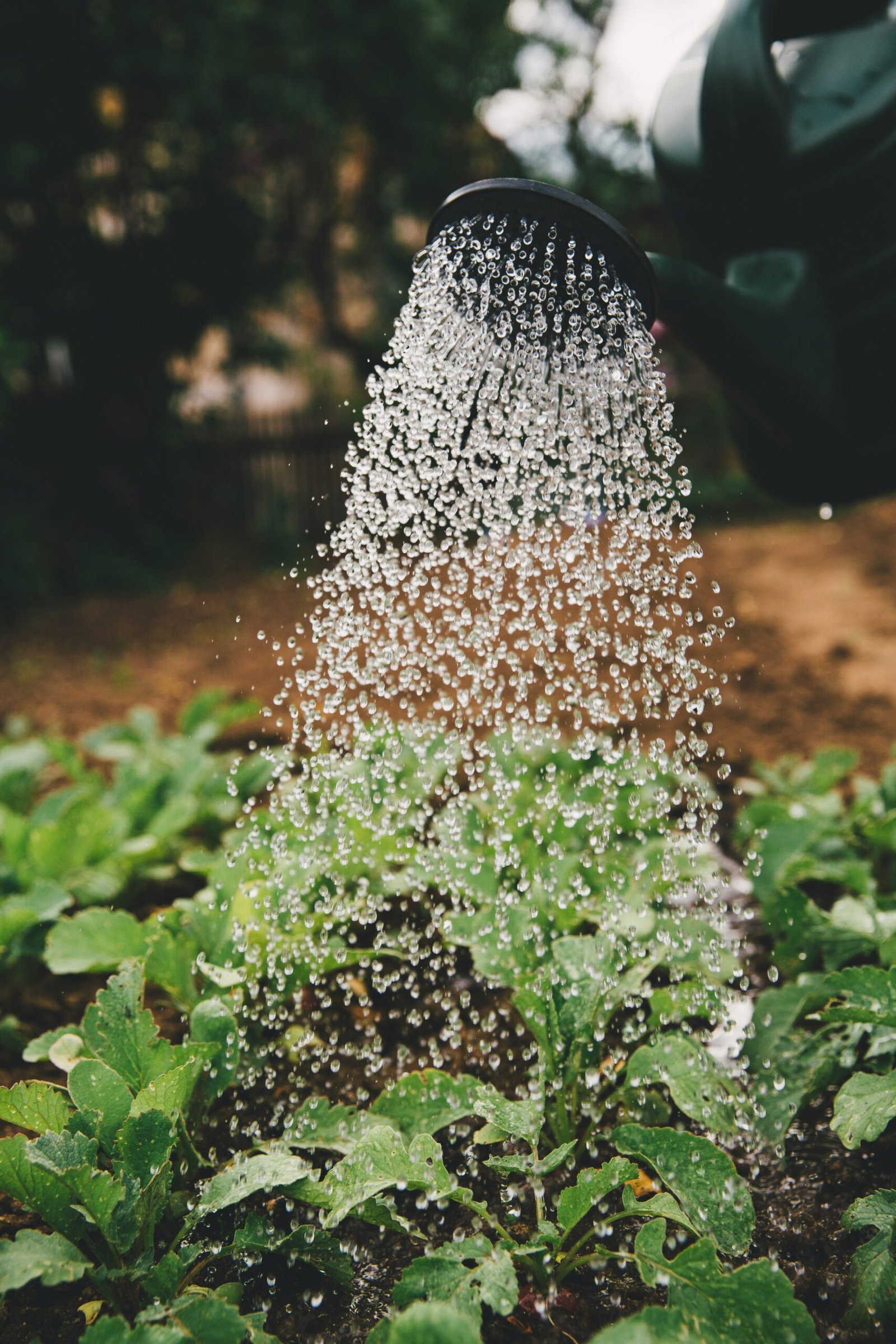Hot Caps for Gardening
Table of Contents
Hot caps for gardening are protective devices designed to shield young plants from adverse weather conditions, particularly frost. Often made from materials such as plastic, fabric, or transparent polycarbonate, these covers are typically designed to fit securely over individual plants or rows of crops, creating a mini-greenhouse effect that retains heat and moisture while allowing sunlight to penetrate.
The primary role of hot caps is to protect sensitive plants during the early stages of growth. When temperatures drop unexpectedly, hot caps serve as a barrier against frost, which can significantly damage or even kill vulnerable seedlings. By trapping heat produced by the soil and the plants themselves, these covers help create a warmer microclimate that is essential for nurturing young vegetation during chilly nights.
Different Varieties of hot caps for Gardening
In addition to frost protection, hot caps for gardening extend the growing season, allowing gardeners to plant earlier in the spring and maintain production later into the fall. This is particularly beneficial for areas with shorter growing seasons or unpredictable weather patterns, enabling both new and seasoned gardeners to maximize their yields. Moreover, the use of hot caps can promote healthier growth by providing consistent warmth and a stabilized environment, which can lead to stronger plants and improved fruit or flower production.

Hot caps are advantageous for a wide range of gardening enthusiasts. Beginners can rely on them to bolster their success rates in establishing new plants, while experienced gardeners can employ them as strategic tools to enhance productivity. The versatility and efficiency of hot caps make them an essential component in any gardener’s toolkit, contributing to sustainable gardening practices and encouraging bountiful harvests.
Types of Hot Caps Available in the Market
Hot caps for gardening serve as valuable protective coverings that shield plants from environmental stresses such as frost, wind, and pests. A variety of options exist in the market, each catering to different gardening needs. Key categories include traditional plastic and glass hot caps, as well as more environmentally friendly biodegradable alternatives.
Traditional plastic hot caps are among the most common choices. Typically lightweight and easy to transport, they provide excellent insulation. They effectively trap heat, thereby creating a warmer microclimate for plants during cooler nights. However, these plastic versions can have durability issues over time, particularly when exposed to UV rays, which can lead to cracking. When selecting plastic hot caps, consider those that are designed to be UV-resistant for extended use.
Different Varieties of hot caps for Gardening
Glass hot caps, another traditional option, provide a sturdy alternative that allows for greater light penetration while maintaining warmth. They have the advantage of being reusable and can last many seasons. On the downside, glass caps are heavier and can pose a risk of breakage, which may inadvertently harm the plants and soil underneath. Additionally, they can create overly high temperatures on sunny days if not monitored carefully.
Biodegradable hot caps, made from materials such as paper, cardboard, or plant-based substances, present a modern approach to plant protection. These caps reduce plastic waste and can be tilled into the soil at the end of their lifespan, enhancing soil health. However, their effectiveness is often limited to short-term use, as they may degrade with prolonged exposure to moisture and the elements. For those aiming for sustainable gardening practices, biodegradable options may be the preferred choice.
Ultimately, the selection of hot caps for gardening will depend on individual preferences, environmental considerations, and specific gardening objectives. Each type has its advantages and limitations, which should be carefully assessed before making a decision.
How to Use Hot Caps Effectively
Using hot caps for gardening can significantly enhance your gardening experience by offering your plants the protection they need against unexpected weather changes. To utilize these protective devices effectively, it is crucial to know the optimal time for placement. When planting tender seedlings or crops, position hot caps over each plant immediately after planting. This will help create a warmer microclimate, promoting growth while shielding the young plants from frost and wind.
Once you have placed hot caps over your plants, ensure they are secured properly. Most hot caps come with built-in fastening mechanisms or can be easily anchored in the soil with weights. If you are using homemade versions, such as milk jugs or plastic bottles, make sure they are firmly positioned to prevent them from being blown away by strong winds. It is advisable to check these caps regularly to ensure they remain intact and functional.
Monitoring the temperature within these caps is another essential aspect of their effective use. During sunny days, especially in early spring, the temperature inside hot caps can rise significantly, potentially leading to plant stress or heat damage. Therefore, you should regularly lift the caps to allow for ventilation, particularly during midday when the sun is at its peak. Another handy tip is to use a thermometer to measure the internal temperature, ensuring it remains within a safe range for your plants.
As the growing season progresses and the threat of frost diminishes, it’s time to consider removing the hot caps gradually. Doing so too quickly can shock the plants; hence, consider starting with partial removal during warm days before taking them off entirely. This practice allows your plants to acclimate gradually to the outside environment without the protective heat barrier. By following these guidelines, you can maximize the advantages of hot caps for gardening while ensuring the optimal health of your plants.
Choosing the Right Plants for Hot Caps
Hot caps for gardening serve as an effective protective measure, especially for delicate plants that are susceptible to temperature extremes. When selecting plants that will benefit the most from using hot caps, it is essential to focus on those that require additional warmth to thrive. Tender seedlings, in particular, are prime candidates for this treatment, as they are often vulnerable to frost and sudden temperature dips during early growth stages.
Among the vegetables, crops such as tomatoes, peppers, and cucumbers greatly benefit from the inclusion of hot caps in their cultivation. These plants thrive in warm environments, and the use of hot caps can create microclimates that help maintain an ideal temperature, fostering optimal growth and early yield. Additionally, leafy greens like lettuce and spinach can also enjoy a growth boost through the use of these caps, as they protect against possible cold shocks while also enabling extended growing seasons.
Different Varieties of hot caps for Gardening
Flowering plants are not excluded from the advantages offered by hot caps for gardening. Annuals such as marigolds and petunias can flower earlier and with greater vibrancy when shielded from cold weather. Perennials that are newly planted also gain protection against cold soil temperatures, which helps to ensure their survival and establishment. When choosing plants, consider not just their individual temperature needs, but also the environmental conditions of your gardening space.
In summary, maximizing growth and yield through the strategic use of hot caps involves selecting the right plants that will benefit from this protection. By prioritizing tender seedlings and specific vegetables and flowering plants, gardeners can ensure a successful growing season, effectively utilizing hot caps to create an optimal environment for their plants.
Maintaining Temperature and Humidity with Hot Caps
Hot caps for gardening serve as an essential tool for regulating temperature and humidity around your plants, promoting optimal growth and development. These protective coverings create a microclimate, effectively trapping warmth and moisture, which is crucial, especially during cooler seasons or in regions with variable weather conditions. By maintaining a stable and suitable environment, plants are less susceptible to stress, pests, and diseases.
The significance of maintaining the right climate cannot be overstated. Plants flourish when they experience ideal temperature ranges and adequate humidity levels. Hot caps help achieve these parameters by acting as miniature greenhouses. When sunlight hits the transparent material of the hot caps, it warms the air inside, ensuring that plants receive the necessary warmth to thrive. This is particularly beneficial for tender seedlings and delicate plants that require a higher temperature for robust growth.
To maximize the effectiveness of hot caps for gardening, monitoring and adjusting the conditions within them is vital. Regularly check soil moisture and air temperature; if the humidity becomes too high, you may need to remove the caps temporarily to allow for ventilation. Conversely, if the temperature drops at night, ensure that the hot caps remain securely on the plants to retain heat. Additionally, the use of thermometers can help in accurately tracking temperature fluctuations, enabling you to make prompt adjustments when necessary.
Employing hot caps not only aids in temperature regulation but also establishes the right humidity levels essential for seed germination and early plant establishment. Therefore, using these protective tools effectively contributes significantly to the overall health and productivity of your garden, ensuring that you cultivate flourishing plants throughout the growing season.
Common Mistakes to Avoid When Using Hot Caps
When utilizing hot caps for gardening, gardeners often face a variety of challenges that can hinder the effectiveness of this protective method. One common mistake is improper placement of the hot caps. It is crucial to position them correctly to provide optimal warmth for plants. Often, gardeners place them too far from the plants or in shaded areas, which can defeat the purpose of using them. To ensure that the hot caps effectively retain heat, they should be set up directly over the plants and in locations that receive adequate sunlight.
Different Varieties of hot caps for Gardening
Another frequent error is selecting caps that are not appropriately sized for the plants they are intended to protect. Hot caps come in various sizes, and using one that is either too large or too small can lead to diminished performance. Caps that are too small may not provide adequate coverage, while oversized caps can trap excess moisture, leading to mold or mildew growth. To avoid this pitfall, carefully assess the plant height and breadth before choosing the right size for hot caps.
Additionally, many gardeners neglect the importance of proper ventilation. While hot caps are designed to trap warmth, they can also lead to overheating if ventilation is not considered. Failing to remove or lift the caps during particularly hot days can stress or damage plants. To strike an effective balance, it is advisable to monitor temperature conditions regularly and adjust the use of hot caps accordingly, allowing for occasional air circulation while still offering protection from the elements.
By being aware of these common mistakes—improper placement, incorrect sizing, and failure to ventilate—gardeners can better utilize hot caps for gardening and foster a thriving environment for their plants.
Integrating Hot Caps into Your Overall Gardening Strategy
Hot caps for gardening are valuable tools that not only serve to protect individual plants from frost and extreme temperatures, but also integrate seamlessly into a broader gardening strategy. By complementing existing practices such as crop rotation, companion planting, and the application of mulch, gardeners can create a holistic approach that enhances plant health and yields.
Firstly, crop rotation is essential for maintaining soil fertility and preventing disease. When introducing hot caps in this context, they can facilitate the early growth of newly planted crops, giving them a competitive edge against weeds and pests in their formative stages. By protecting the initial growth period of rotated crops, hot caps can contribute to the success of this practice, ensuring that each subsequent planting thrives in nutrient-rich soil.
Secondly, surrounding plants strategically through companion planting enhances productivity and pest control. Hot caps can be employed to foster specific companion plant relationships, providing the needed warmth to certain varieties that thrive in cooler temperatures. For instance, using hot caps on sensitive crops like tomatoes when interplanted with more resilient herbs or flowers can create a microclimate that encourages growth, while simultaneously reaping the benefits of pest deterrence.
Moreover, integrating mulch with hot caps further protects the soil moisture and temperature, optimizing conditions for root development and nutritional uptake. By layering mulch around plants that are covered by hot caps, the soil retains heat while minimizing evaporation. This synergy not only promotes optimal growth but also reduces the need for frequent watering.
Ultimately, by coordinating the use of hot caps for gardening with these practices, gardeners can achieve a sustainable and productive gardening ecosystem that consistently yields healthy crops throughout the growing season.
Reviews of Popular Hot Caps Products
As gardening enthusiasts seek to extend their growing season and protect delicate plants from adverse weather conditions, numerous hot caps products have gained popularity. These protective coverings can serve crucial roles in maintaining soil temperature and shielding plants from frost. Below are some notable hot caps available in the market, each offering distinct features and benefits.
The Gardener’s Supply Company Hot Caps are designed for versatility and ease of use. Made from durable, weather-resistant materials, these hot caps provide ample protection against the elements while allowing sunlight to penetrate. Many users praise their effectiveness in insulating young seedlings, especially during unexpected cold snaps. Additionally, their lightweight construction makes them easy to reposition as needed.
Another popular option is the Greenhouse Hot Cap by Dalen Products. This product features a unique design that creates a mini-greenhouse effect around the plants, promoting growth while protecting against frost. Customers have reported positive results, noting that the caps not only protect their plants but also help maintain optimal humidity levels. The transparent material allows for unobstructed sunlight, further fostering plant health.
The Eco-Friendly Hot Caps, made from biodegradable materials, cater to environmentally conscious gardeners. Users have lauded their effectiveness in warming the soil and providing crucial protection for tender seedlings without harming the ecosystem. As these caps decompose naturally over time, they contribute to soil enrichment—a benefit much appreciated by sustainable gardening advocates.
In summary, selecting the right hot caps for gardening depends on various factors, including the type of plants, local climate, and individual preferences. By considering products such as Gardener’s Supply Hot Caps, Dalen’s Greenhouse Hot Caps, and Eco-Friendly options, gardeners can confidently protect their plants while enhancing their growth potential. Each option boasts distinct advantages, making it essential to assess personal gardening goals when making a decision.
Get Hot Caps for Gardening Now
Expert Tips and Tricks for Using Hot Caps
Using hot caps for gardening can be an effective way to protect tender plants from extreme weather conditions. To maximize the benefits of this gardening tool, seasoned gardeners and horticulturists recommend several best practices. First and foremost, it is crucial to select the right type of hot cap that suits your plant’s specific needs. Materials vary from plastic to fabric, each offering different levels of insulation and protection. For instance, clear plastic hot caps can trap warmth while allowing sunlight to penetrate, making them ideal for germinating seedlings in cooler conditions.
Placement is another essential factor to consider. Experts suggest positioning hot caps on plants during the late afternoon or early evening to create a conducive microenvironment overnight. This timing allows the heat to be retained without risking overheating during the day. Additionally, using hot caps in conjunction with other protective measures—such as row covers or mulch—can provide an extra layer of insulation, amplifying their effectiveness. Remember to remove the caps on warmer days to prevent overheating, as excessive heat can damage tender plants.
Innovative ideas for using hot caps creatively are plentiful. For instance, some gardeners employ hot caps as a method to extend the growing season by transplanting seedlings earlier than they typically would. By shielding these young plants from late frosts, gardeners can enjoy a longer harvest season. Others utilize decorative hot caps, such as those made from recycled materials, as part of an aesthetic gardening design. This approach not only serves a functional purpose but can also enhance the overall visual appeal of the garden.
In conclusion, implementing expert tips on using hot caps for gardening can significantly enhance their protective capabilities. By being mindful of selection, placement, and creative usage, gardeners can ensure their plants thrive amidst varying weather challenges.
Different Varieties of hot caps for Gardening
- Sunlight Calculators for Gardening
- Landscaping Ideas for Pet Owners
- Amla Tree Care: Cultivating the Superfruit
- Creative Sloped Walkway Ideas for Your Home
- Low Maintenance Louisiana Landscaping Ideas
Discover more from Gardening with Ecorganicas: Your Source for Organic Gardening Tips
Subscribe to get the latest posts sent to your email.









Pingback: Mastering Drought Tolerant Gardening: A Guide To Sustainable Green Spaces